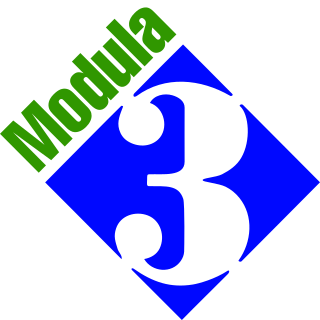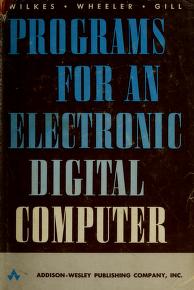Object–relational mapping in computer science is a programming technique for converting data between a relational database and the heap of an object-oriented programming language. This creates, in effect, a virtual object database that can be used from within the programming language.
Defensive programming is a form of defensive design intended to develop programs that are capable of detecting potential security abnormalities and make predetermined responses. It ensures the continuing function of a piece of software under unforeseen circumstances. Defensive programming practices are often used where high availability, safety, or security is needed.
Generic programming is a style of computer programming in which algorithms are written in terms of data types to-be-specified-later that are then instantiated when needed for specific types provided as parameters. This approach, pioneered by the ML programming language in 1973, permits writing common functions or types that differ only in the set of types on which they operate when used, thus reducing duplicate code.
Programming paradigms are a way to classify programming languages based on their features. Languages can be classified into multiple paradigms.
Copy-and-paste programming, sometimes referred to as just pasting, is the production of highly repetitive computer programming code, as produced by copy and paste operations. It is primarily a pejorative term; those who use the term are often implying a lack of programming competence and ability to create abstractions. It may also be the result of technology limitations as subroutines or libraries would normally be used instead. However, there are occasions when copy-and-paste programming is considered acceptable or necessary, such as for boilerplate, loop unrolling, or certain programming idioms, and it is supported by some source code editors in the form of snippets.

Modula-3 is a programming language conceived as a successor to an upgraded version of Modula-2 known as Modula-2+. While it has been influential in research circles it has not been adopted widely in industry. It was designed by Luca Cardelli, James Donahue, Lucille Glassman, Mick Jordan, Bill Kalsow and Greg Nelson at the Digital Equipment Corporation (DEC) Systems Research Center (SRC) and the Olivetti Research Center (ORC) in the late 1980s.
Software bloat is a process whereby successive versions of a computer program become perceptibly slower, use more memory, disk space or processing power, or have higher hardware requirements than the previous version, while making only dubious user-perceptible improvements or suffering from feature creep. The term is not applied consistently; it is often used as a pejorative by end users (bloatware) to describe undesired user interface changes even if those changes had little or no effect on the hardware requirements. In long-lived software, perceived bloat can occur from the software servicing a large, diverse marketplace with many differing requirements. Most end users will feel they only need some limited subset of the available functions, and will regard the others as unnecessary bloat, even if end users with different requirements require those functions.
In computer programming, specifically object-oriented programming, a class invariant is an invariant used for constraining objects of a class. Methods of the class should preserve the invariant. The class invariant constrains the state stored in the object.
In computer programming, a thunk is a subroutine used to inject a calculation into another subroutine. Thunks are primarily used to delay a calculation until its result is needed, or to insert operations at the beginning or end of the other subroutine. They have many other applications in compiler code generation and modular programming.
In computer programming, a software framework is an abstraction in which software, providing generic functionality, can be selectively changed by additional user-written code, thus providing application-specific software. It provides a standard way to build and deploy applications and is a universal, reusable software environment that provides particular functionality as part of a larger software platform to facilitate the development of software applications, products and solutions.
The Macintosh Toolbox implements many of the high-level features of the Classic Mac OS, including a set of application programming interfaces for software development on the platform. The Toolbox consists of a number of "managers," software components such as QuickDraw, responsible for drawing onscreen graphics, and the Menu Manager, which maintain data structures describing the menu bar. As the original Macintosh was designed without virtual memory or memory protection, it was important to classify code according to when it should be loaded into memory or kept on disk, and how it should be accessed. The Toolbox consists of subroutines essential enough to be permanently kept in memory and accessible by a two-byte machine instruction; however it excludes core "kernel" functionality such as memory management and the file system. Note that the Toolbox does not draw the menu onscreen: menus were designed to have a customizable appearance, so the drawing code was stored in a resource, which could be on a disk.
In computer programming, autoloading is the capability of loading and linking portions of a program from mass storage automatically when needed, so that the programmer is not required to define or include those portions of the program explicitly. Many high-level programming languages include autoload capabilities, which sacrifice some run-time speed for ease of coding and speed of initial compilation/linking.
In computer programming, the term hooking covers a range of techniques used to alter or augment the behaviour of an operating system, of applications, or of other software components by intercepting function calls or messages or events passed between software components. Code that handles such intercepted function calls, events or messages is called a hook.

Control tables are tables that control the control flow or play a major part in program control. There are no rigid rules about the structure or content of a control table—its qualifying attribute is its ability to direct control flow in some way through "execution" by a processor or interpreter. The design of such tables is sometimes referred to as table-driven design. In some cases, control tables can be specific implementations of finite-state-machine-based automata-based programming. If there are several hierarchical levels of control table they may behave in a manner equivalent to UML state machines
The W3C Geolocation API is an effort by the World Wide Web Consortium (W3C) to standardize an interface to retrieve the geographical location information for a client-side device. It defines a set of objects, ECMAScript standard compliant, that executing in the client application give the client's device location through the consulting of Location Information Servers, which are transparent for the application programming interface (API). The most common sources of location information are IP address, Wi-Fi and Bluetooth MAC address, radio-frequency identification (RFID), Wi-Fi connection location, or device Global Positioning System (GPS) and GSM/CDMA cell IDs. The location is returned with a given accuracy depending on the best location information source available.

An application programming interface (API) is a way for two or more computer programs to communicate with each other. It is a type of software interface, offering a service to other pieces of software. A document or standard that describes how to build or use such a connection or interface is called an API specification. A computer system that meets this standard is said to implement or expose an API. The term API may refer either to the specification or to the implementation. Whereas a system's user interface dictates how its end-users interact with the system in question, its API dictates how to write code that takes advantage of that system's capabilities.
In computer programming, a function or subroutine is a sequence of program instructions that performs a specific task, packaged as a unit. This unit can then be used in programs wherever that particular task should be performed.
Leaflet is an open source JavaScript library used to build web mapping applications. First released in 2011, it supports most mobile and desktop platforms, supporting HTML5 and CSS3. Among its users are FourSquare, Pinterest and Flickr.

Zig is an imperative, general-purpose, statically typed, compiled system programming language designed by Andrew Kelley. It is intended to be a successor to the C programming language, with the goals of being even smaller and simpler to program in while also offering modern features, new optimizations and a variety of safety mechanisms while not as demanding of runtime safety as seen in other languages. It is distinct from languages like Go, Rust and Carbon, which have similar goals but also target the C++ space.

The Preparation of Programs for an Electronic Digital Computer was the first book on computer programming. Published in 1951, it was written by Maurice Wilkes, David Wheeler, and Stanley Gill of Cambridge University. The book was based on the authors' experiences constructing and using EDSAC, one of the first practical computers in the world.




